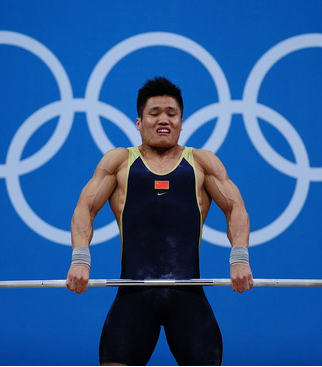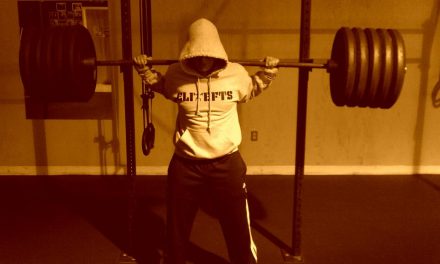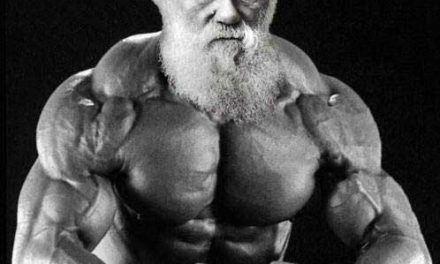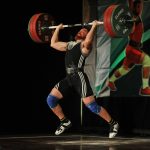by: Adam Sayih
Snatch, Clean, Jerk, Squat, Pull. Basically the only exercises you’ll see in a typical weightlifting program. It goes without debate that these movements are absolutely essential to the weightlifting specialist, however, bodybuilding-style accessory movements don’t have to be ignored if you are clever enough with your programming.
The Intermediate “Specialist” and Specific Volume
One issue I notice in many novice and intermediate lifters is that they believe they need to train the same exact way as the elite. While training still needs to be very specific, an intermediate level lifter doesn’t require nearly as much specific volume as an elite level weightlifter. What this means is that the folks lifting at the international level need 7-12 training sessions per week because it’s simply the only feasible way to get in that much volume to keep making progress. It took these lifters a lifetime of training to get to this point, however, someone with only a few years of training under their belt can make a ton of progress with very little volume.
Diminishing Returns
In the world of economics, the law of diminishing returns states that in all productive processes, adding more of one factor, while holding all others constant, will at some point yield lower incremental per-unit returns. Interestingly enough, this law also applies to strength training. If you only have an hour or two to train, will nine sets of snatches be more beneficial than maybe four or five sets? You have to remember, you aren’t elite, so a reasonable amount of sets will have pretty much the same training effect as an additional two to three sets. You have to remember since you aren’t elite, the amount of benefit you get from a small dose of training is significantly more than an elite level lifter who has adapted to a tremendous amount of training volume over a long period of time. Why perform seven sets when you can make great progress with just four? If you want to make long term, consistent gains, your program should be set up to make consistent progress on as little volume as possible. This concept of “doing more isn’t actually better” also frees up training time to sneak in hypertrophy work.
Sneaking in hypertrophy work
Jumping into a very highly specific training as an intermediate is just simply unnecessary. You can get away with doing a bunch of hypertrophy work, still progress in the weightlifting movements, and actually look good. No, the snatch and clean alone won’t be enough to make you looked jacked and tan. While it is true that being as specific as possible will probably be the best route for maximizing performance in the competition lifts, if we remember the concepts I mentioned earlier, as an intermediate you are still making very fast progress and additional hypertrophy might actually be of some useful benefit (Increasing strength potential, injury prevention, increased sexiness).
There’s a few reasons, all which are very valid, why you don’t see too many weightlifters performing bodybuilding work in their programs, but there’s also plenty of evidence in the countries that win medals at the Olympics that bodybuilding work can be implemented in even Olympic level weightlifters.
Fatigue and Soreness
One of the biggest issues with bodybuilding style work is that it produces a lot of muscle damage. For the most part, there is very little to no eccentric movements in weightlifting. Bench press, bicep curls, shoulder press, etc. all have controlled eccentric movements for every single rep, and sets require more reps than is usually prescribed for weightlifting movements. This leads to more Delayed Onset of Muscle Soreness (DOMS) which can reduce strength, power, and even total volume over time. As you might imagine, it’s not very ideal to have a sore chest when trying to perform a heavy snatch. However, if we consider the training concepts I mentioned earlier, we can sneak around DOMS and get away with movements like bench press and not have it effect weightlifting performance.
Usually when I hear weightlifters add bench press to their workout, they mention it was a bad idea and will probably stay away from that movement. However, when I ask what they did, it’s usually something extreme like four sets of twelve. While you may be considered a trained athlete, reintroducing the bench press is actually a new stimulus. This means you’ll probably get very sore as result. Every time we train we experience what’s called a Repeated Bout Effect (RBE). This phenomenon is the reason you don’t get as sore you do from the first day you started training. RBE is essentially the adaptations to training so you aren’t as beat up and while the mechanisms aren’t understood completely, it is mostly attributed to sarcomerogenesis (the creation of more sarcomeres, which is essentially what makes muscles contract, and satellite cell proliferation). Interestingly enough, it only takes about 10% of your one-rep max to have a RBE adaptation occur. Why is knowing this important? Since bench pressing is a new stimulus we don’t want to be overly sore so keep in mind it only takes a very low volume of bench pressing at first to start getting some results without it effecting everything else. So reintroducing the bench press is completely do-able, but simply just start with one set, rather than destroying yourself with five. The next week or two, bump it up to two sets. As stated earlier in the article, there’s no need to rush into a crap ton of volume. Slowly work in more volume as you continue to adapt and bench pressing will work into your normal training program without any issues.
Mobility
Saying bodybuilding work makes you stiff and not flexible is essentially just saying you’re lazy. There are plenty of elite level weightlifters and even bodybuilders who are way more jacked than you and way more flexible. You can easily counter any potential flexibility and mobility issues from added mass by simply adding more flexibility and mobility work. Most powerlifters have decades of heavy bench pressing under their belt that might not be conducive to overhead mobility, but if you already have the ability to overhead squat, it simply won’t vanish after throwing in a few sets of bench press. If you make the mistake I mentioned earlier about too much, too soon, you will definitely feel “tighter” a few days after doing five sets of bench press till failure. Try to avoid failure by holding back a few reps for most sets. This saves you from a ton of DOMS but also allows you to increase the amount of training volume you can achieve (More on this topic here).
Putting it all together
Getting jacked and still throwing all the weight over your head (emphasis on ALL the weight) is very possible. You need to realize that you can probably get away with it by slightly cutting back on the specific work and use that time for some bodybuilding work. It’s equally important that when you do introduce bodybuilding work back into your routine, you have to respect it as a new stimulus and take it easy and start with a very low amount of volume and slowly work up. Don’t get this confused with me saying you shouldn’t train the main lifts as often and just start curling your ass off. Try to make the most out of technique work (that doesn’t produce a ton of fatigue), make your working sets the priority but not 95% of your training, then pepper in some hypertrophy work at the end. If you’re still a little confused or need help, check out our free 12 week size program for weightlifters in our “Program” section.
Cheers,
Stay connected!
Here’s how to follow us:
Instagram: @GentlemanAndMeathead
Facebook: Facebook.com/GentlemanAndMeathead
Twitter: @ClassyMeathead
Featured image credit: July 31, 2012, Laurence Griffiths/Getty Images Europe










